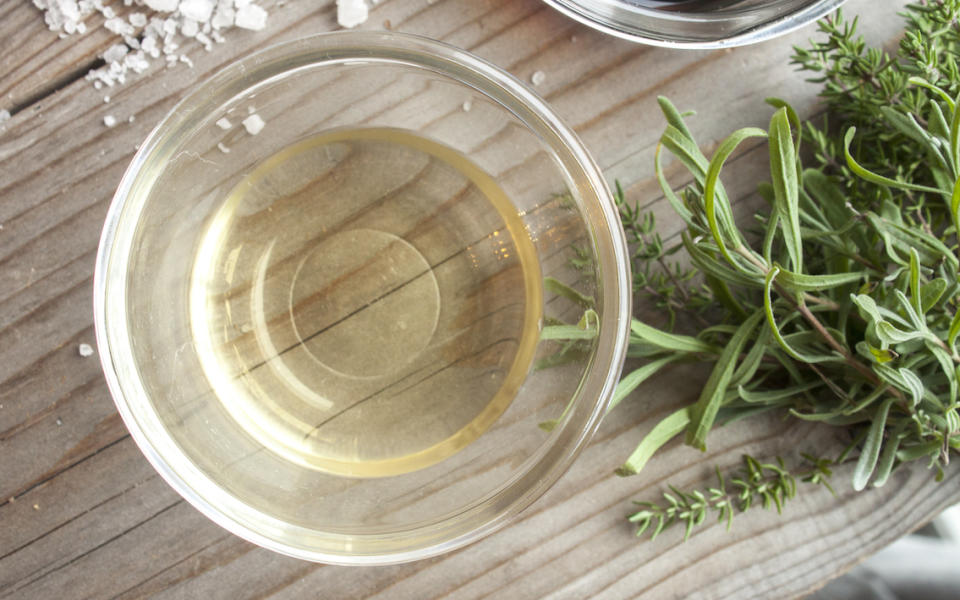Table of Contents
It happens to the best of us: in the middle of dinner prep, a plastic bowl gets left on a hot burner and tonight’s meal cleanup just got exponentially more complicated. The smell of melting plastic is never a good sign, but it’s especially disappointing to lose a favorite mixing bowl to the wrath of a hot burner. If you’ve fallen victim to a melted plastic situation, don’t lose hope: While it may feel like an impossible mess to clean up, experts say that learning how to get melted plastic off stove top is easy.
How to get melted plastic off a stove top
Colin Matthiesen, Marketing & Quality Assurance Specialist with PR Cleaners, has more than a decade of experience in the cleaning industry and offers helpful tips to clean up the melted plastic based upon what type of stove top you have.
Have a glass top or ceramic stove top?
Follow these simple steps:
Step 1: Cool it down
“The first step is always to turn off the heat and allow the stove and the plastic to cool down,” Matthiesen says. “This can prevent the plastic from further melting and reduce the risk of injuries.”
Step 2: Gently scrape
Use a plastic scraper (Buy from Amazon, $8.99 for set of 10) or a razor blade at an angle to gently scrape off the plastic. Be careful to avoid scratching the glass or ceramic surface.
Step 3: Freeze the plastic
If scraping isn’t effectively removing the plastic, you may need to cool the plastic even further. Fill a gallon or quart-sized bag with ice (the size of the bag varies based on the surface area of the stain). Place the bag of ice on top of the plastic for 15-30 minutes. Once the plastic has hardened, use the plastic scraper to remove it. Repeat steps 2 and 3 as often as needed until the stain has been resolved.
Step 4: Finish with cleaning products
Once the big plastic chunks have been removed, it’s time to clean the stove top. A couple of well known cleaning products Matthiesen has experience using are:
For glass cooktops: Cerama Bryte
This cleaner (Buy from Amazon, $11.99) was specifically designed for glass-ceramic cooktops. It helps to remove burnt-on residue without scratching the delicate surface of a glass top stove.
For hard to remove residue: Weiman Cooktop Cleaner Kit
This kit (Buy from Amazon, $18.98) includes a cleaning solution, scrubbing pad and a razor blade scraper. It is effective for heavy-duty cleaning and removing hard-to-clean, burnt-on residue.
For lighter residue: Mr. Clean Magic Eraser
A swipe from a Magic Eraser (Buy from Amazon, 10 for $13.24) can be an effective tool. The proprietary formula of Magic Eraser is under lock and key, but we know it uses melamine foam to gently scrub away residue.
For all stovetops: Bar Keepers Friend Cooktop Cleaner
This non-abrasive cleaner (Buy from Amazon, 2 for $10.76) is safe for all types of stovetops and can remove burnt-on food, grease, grime and plastic. (Click through for more uses for Bar Keepers Friend.)
And if after cleaning the cooktop you notice the surface looks dulled, Kathy Cohoon, Operations Manager at Two Maids, recommends using a glass or ceramic cooktop cleaner to restore the shine.
One caveat: Before using any of the above products, pay careful attention to and follow the manufacturer’s instructions. Do not mix cleaning solutions or use an abrasive cleaner as they tend to scratch the stove top surface, causing irreparable damage.
Prefer to make your own cleaning solution for less?
Baking soda and vinegar to the rescue! Watch how to get melted plastic off a stove top using the mix, below.
How to get melted plastic off a metal hob on a gas stove top
If you’ve got a gas cooktop with a blob of melted plastic on the metal burner, the process to remove it is pretty simple., but don’t be afraid to use extra elbow grease. When there’s more plastic to clean up, it’s likely you’ll need to be more forceful to remove all the residue.
Step 1: Let cool completely
Turn off the gas and let the metal hob cool to room temperature.
Step 2: Scrape the melted plastic
Using a plastic scraper, gently scrape off the melted plastic from the metal hob. If any plastic melted on the metal grates, it might be easier to remove the grates from the cooktop and clean the grates in a utility or kitchen sink. If any plastic remains after scraping, use a hairdryer or a heat gun on low heat to soften the plastic. Then, scrape or peel any lingering plastic.
Step 3: Clean plastic-free surface
Once the melted plastic has been successfully removed, you’ll want to use a solvent such as rubbing alcohol or nail polish to thoroughly sanitize the surface. If any residue remains, use a non-abrasive scrubbing pad with a mild, metal cleaner.
Step 4: Scrub Clean
Finish cleaning the metal hobs with a gentle metal cleaner or soapy water. Rinse and dry.
How to get rid of the melted plastic fumes

The pungent smell of melted plastic is definitely not a welcome kitchen odor. To nix it, Cohoon recommends filling small bowls with white vinegar and placing them around the room to eliminate any lingering melted plastic smells.
Matthiesen takes a slightly different approach: “Open all windows and doors to ventilate the kitchen,” he says. “You can also use a fan to facilitate air circulation.”
The best way to avoid melted plastic on a stovetop in the first place
One easy way to avoid future melted plastic mishaps, is by selecting heat-resistant materials in your cooking collection can help. Look for silicone, metal or glass items that can withstand the heat. “Always check the stove top is cool before placing anything on it .
But, if you’re notorious for melting kitchen items, consider investing in an induction cooktop. The technology behind induction cooktops is designed to produce heat with magnetic currents (which is why induction cooktops require specific cookware). The stove top will feel cold to the touch. Many cooks prefer induction because the stove tops are easy to clean.
For more tips on how to clean your stove click through these stories:
How to Clean an Oven Quickly and Painlessly
5 Oven Cleaning Hacks to Save Time and Money

Rachel Weber is an award-winning journalist with a passion for all things lifestyle, home, and garden. She started with Better Homes & Gardens as an editorial apprentice in 2006 and has been writing and editing ever since. She teaches journalism classes at Iowa State University, works at a boutique public relations firm and loves to write about all the things she learned when she was homeschooled. She’s worked on brands like Allrecipes, Lowe’s Creative Ideas, Shape, and Better Homes & Gardens doing everything from recipe testing to designing kitchens.
Rachel holds a B.A. in journalism and psychology from Iowa State University and an M.A. in communication leadership from Drake University. She loves to crack a good dad joke and listen to Taylor Swift. She’s also pretty proud of her alphabetized spice rack and color-coded closet. A breast cancer survivor, Rachel is passionate about early detection and healthcare advocacy.
LinkedIn: https://www.linkedin.com/in/rachelmweber
Instagram: https://www.instagram.com/rachel.m.weber/?hl=en
Woman’s World aims to feature only the best products and services. We update when possible, but deals expire and prices can change. If you buy something via one of our links, we may earn a commission.
Questions? Reach us at [email protected]
